Hervé Memiaghe is a Gabonese ecologist with a deep interest in sustainable development and forest conservation.
The diverse forests and jungles of Gabon cover nearly 80 percent of the country’s geography, from the nation’s interior to the Atlantic. In addition to helping regulate regional climate and sequestering carbon as part of the Congo Basin, Gabon’s forests supply the country’s more than 1.8 million people with essential commodities and services. The region’s future depends upon careful management and monitoring of this vital resource.
In a forest research plot on the southwestern coast at Rabi, Smithsonian scientists are studying the forest to better understand the impacts of climate change. Research at the Rabi plot aims to assess ways to help mitigate environmental impacts of development, increase Gabon’s capacity in scientific research, and raise a greater awareness of Gabon’s rich biodiversity.
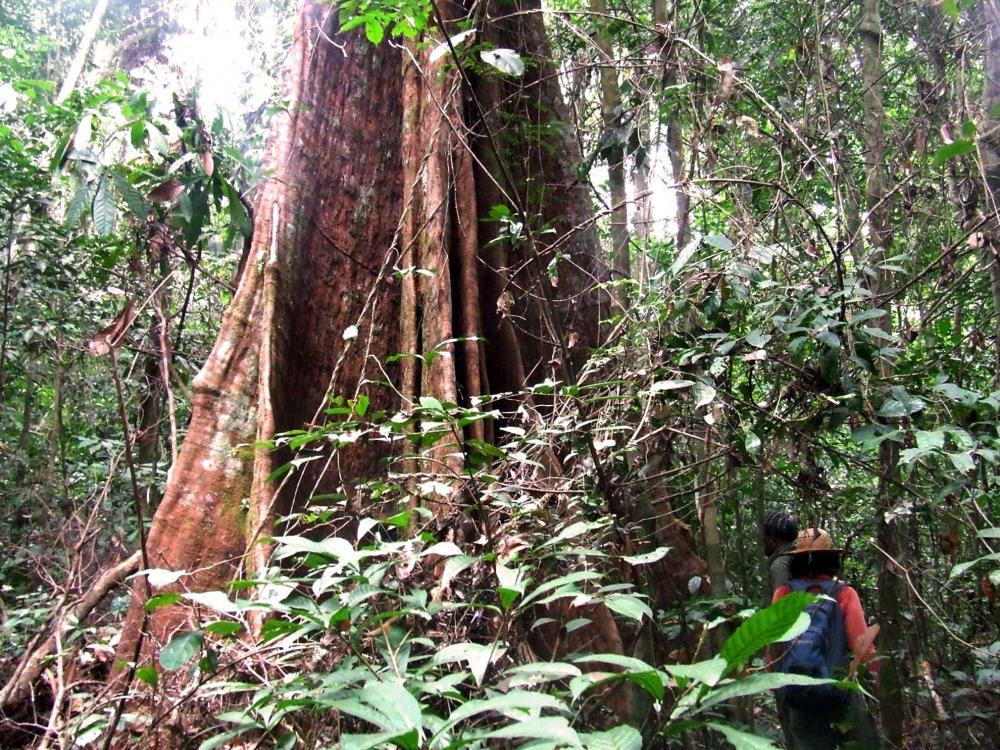
The 60-acre Rabi forest plot is one of 63 Smithsonian-sponsored research plots in 24 countries that make up the Smithsonian Forest Global Earth Observatory (ForestGEO). This network monitors the function and diversity of 6 million trees and 10,000 species in tropical and temperate forests. The Government of Gabon has been a vital partner supporting Smithsonian research in the Gabon forest research plot as part of its commitment to dedicate at least 15 percent of the country’s land area to conservation and sustainable management. The Rabi plot, in Gabon’s heavily forested Gamba Complex of Protected Areas, is a collaborative effort between the Smithsonian Tropical Research Institute (STRI), the Smithsonian Conservation Biology Institute (SCBI), Shell Gabon and the Government of Gabon.
Gabonese ecologist Hervé Memiaghe is one of the scientists at the Rabi plot. He is working with local student citizen scientists to measure the forest’s growth, as part of the Smithsonian’s Tree Banding Project.
A citizen science program targeted at elementary and secondary schools, the Smithsonian’s Tree Banding Project is a global observatory that collects data on tree growth. Led by Smithsonian Environmental Research Center (SERC) forest ecologist Geoffrey “Jess” Parker, with funding from a Microsoft Partners in Learning grant, the project has worked with schools around the world to set up simple, inexpensive metal bands called dendrometers to relay information about the schools’ local trees.
In 2013, Hervé helped two middle schools in Gabon join other schools around the globe to contribute to the project. Supported by a Smithsonian Youth Access Grant as part of the Earth Matters exhibition at the Smithsonian’s National Museum of African Art, he traveled to SERC and worked with Jess to learn about dendrometers and the digital calipers used to measure changes in trees’ girth.
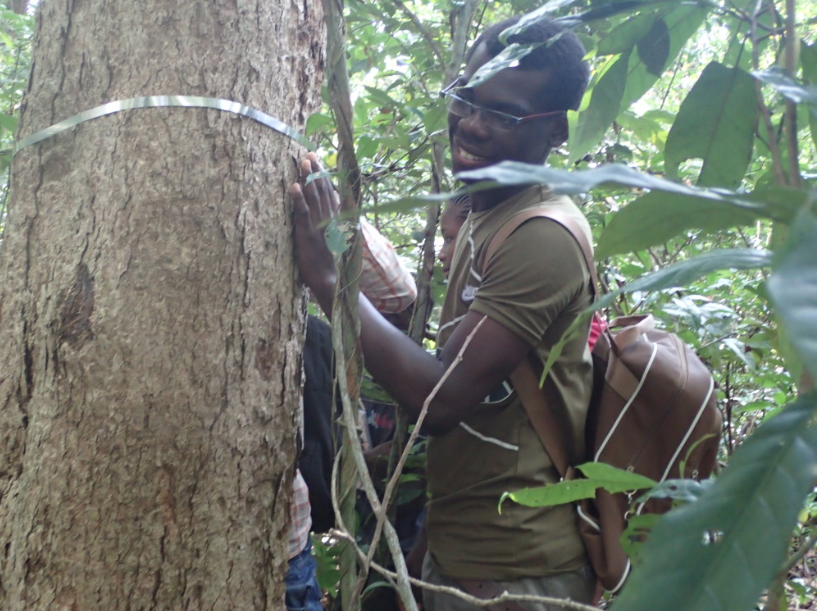
The simplest metric for measuring a forest’s ecological health and impact is by monitoring tree growth. As they grow, trees absorb atmospheric carbon dioxide and incorporate the carbon into their bodies, making them powerful carbon sinks. They also play an important role in the water cycle, improving water quality by trapping and filtering rainfall.
Dendrometers are advantageous for a number of reasons. These bands are cheap, at $2 to $3 each, and the digital calipers used to measure changes through a window on the band also only cost between $15 and $20. They’re also accurate, allowing measurements of growth even from within a single season; previously, Hervé had to manually measure trees in the Rabi survey plot on a five-year interval with a hand-held tape, a method prone to a fair margin of error.
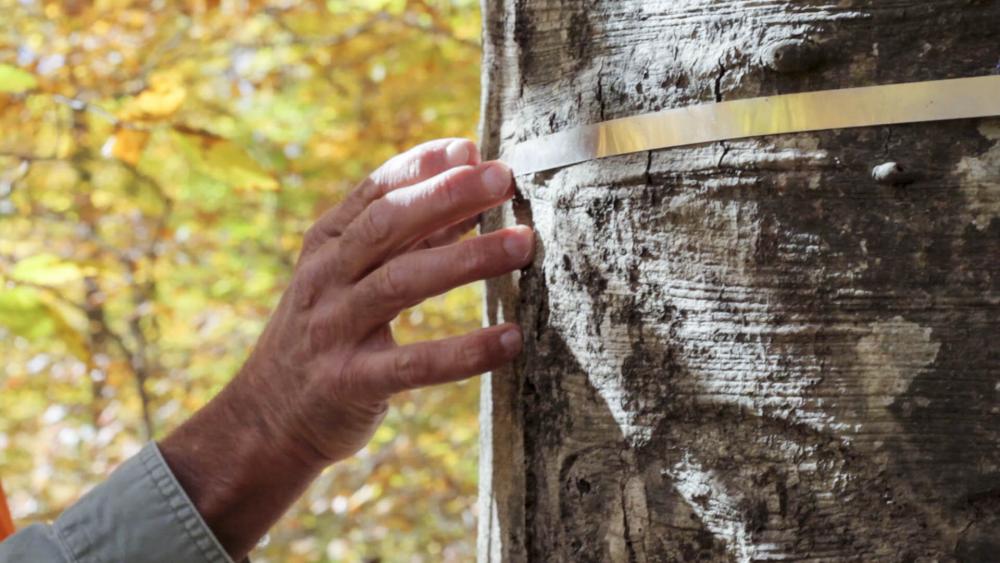
Positioned like belts, dendrometers grow or shrink with the trees. Researchers gauge changes through a window on the band with the digital calipers, which are capable of showing variations as slight as 1/100th of a millimeter, less than the width of a human hair. This level of sensitivity reveals rapid changes in growth that are related to local environmental factors, including not only how much a tree grew in a year, but also when it began and when it stopped growing.
“The advantage of tree bands is that you can talk about factors that happen in one year that could have contributed to the growth of the tree,” Jess says. “It’s a very simple, powerful technology that allows us to track some very short-term behaviors in tree growth.”
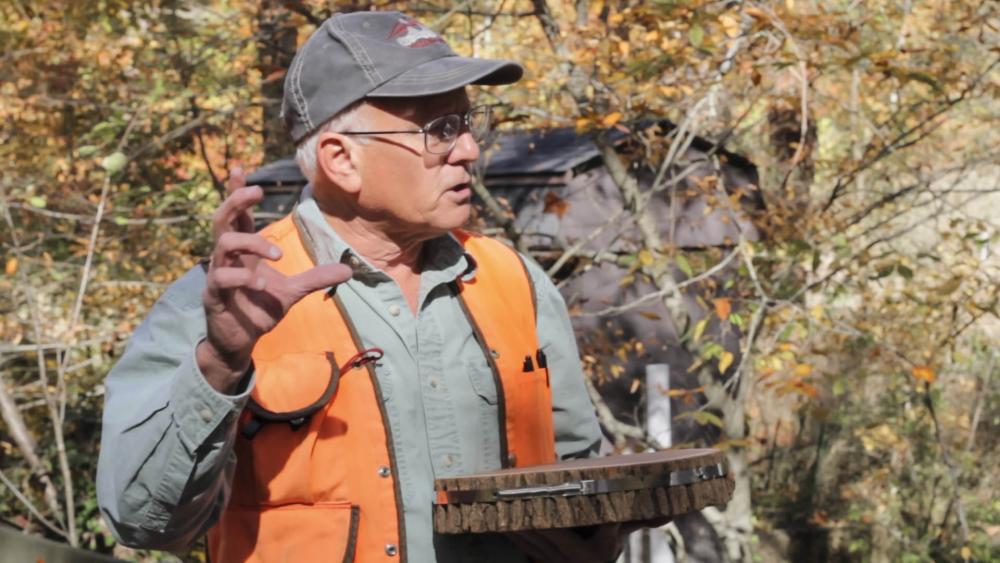
Hervé viewed the tree bands as an easy and affordable way to expand the Tree Banding Project to schools anywhere in Gabon, with the idea that directly involving students in the process of ecological monitoring would foster a deeper understanding of—and appreciation for—the environment around their homes.
“It’s a way to have something they can discover in the field,” Hervé says. “It’s good for them to get some activities that aren’t just about reading a book and listening. Most times it’s very rich schools that do this kind of work, but these public school children were very excited to be involved.”
Two middle schools, Lycée Jean Baptiste Obiang Etoughe, in Libreville, and Lycée Roger Gouteyron, in Gamba, joined a network of over 500 schools and institutions that are part of the Smithsonian Tree Banding Project. Hervé hopes that eventually more than 40 students will be tracking over two dozen trees.
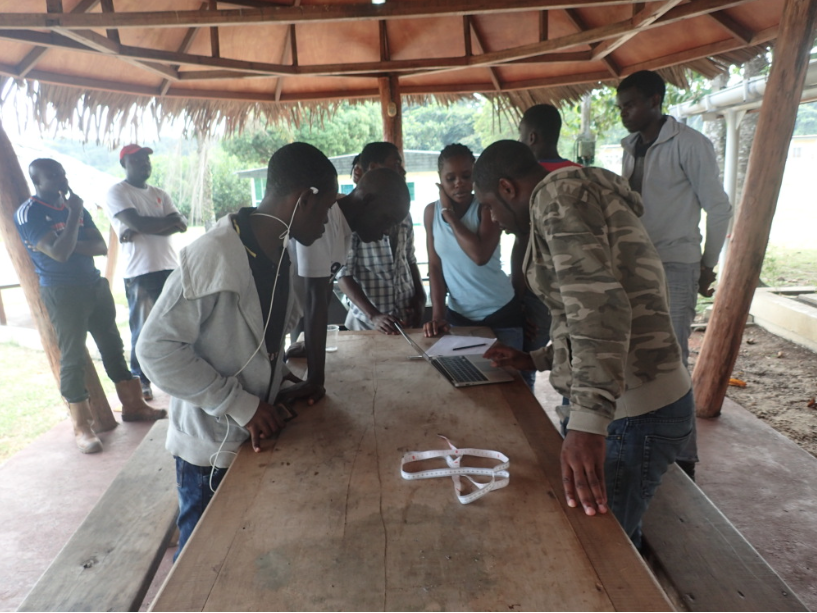
Hervé and the students monitored a dozen trees in in Gamba over the course of a year. Students, he said, grew eager to relate their experiences and observations to peers and parents who had little prior knowledge of the scientific value of their forests.
“At first, the parents didn’t understand the importance of climate change,” Hervé said. “But as students got excited talking about how trees grow, and how climate change affects what we can observe right now, it brought more thought into how they can be more diverse about climate change and ecosystem conservation. They started talking about how they can change things even in their own city.”
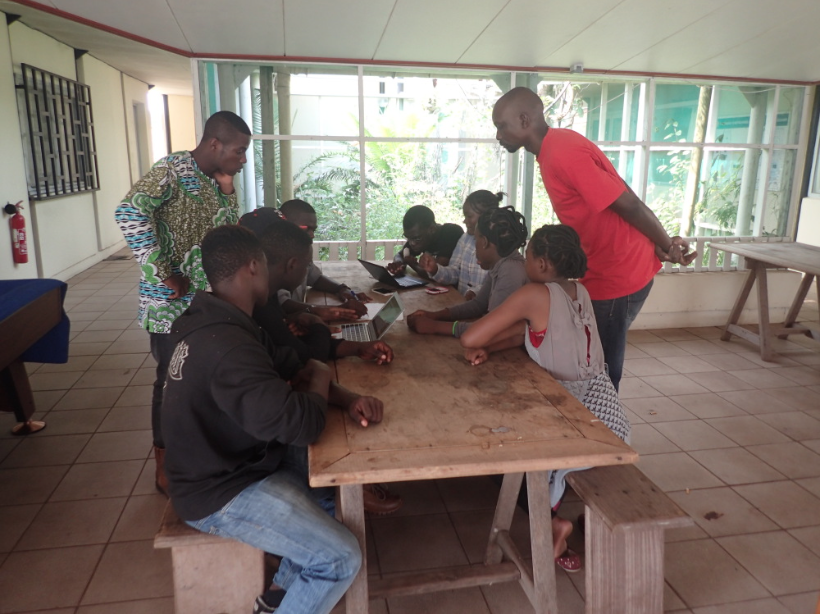
By including students in the effort to assemble a library of data from forests in Gabon and around the world, scientists like Hervé are not only investing new stakeholders in their research, but are also working to build a deep well of knowledge to draw upon for global and local climate patterns.
“Collecting these measurements from as many places as we can, for as long as we can, is a powerful tool to exploit,” Jess adds. “The approach to network-type studies, and tree banding in particular, is that if we get many observations from many places, we can start to learn how things are affected by weather and climate. We’re building a library of variations on possible futures.”
People
Jess oversees the Smithsonian Environmental Research Center (SERC) forest-monitoring plot in Edgewater, MD. The forest ecology research he directs at SERC helps to create a baseline for judging how climate change affects temperate forests globally.
Programs
In 2013, with the help of Hervé Memiaghe, a Gabonese forest ecologist who traveled to the Smithsonian Environmental Research Center (SERC) to learn to use dendrometers in his research, two middle schools in Gabon, Africa joined other schools around the globe to contribute to the project.
Locations
- Gabon